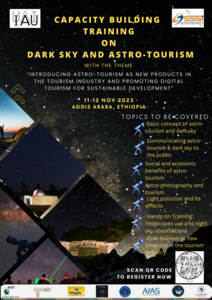Gravimetric Quasigeoid Modeling Over Ethiopia
Ephrem Yalew Belay
Prof. Robert Tenzer (Main Supervisor)
Prof. Walyeldeen Godah (Co-Supervisor)
Dr. Addisu Hunegnaw (Co-Supervisor)
10:00 – 12:00 AM
February 22, 2022
Fikir Plaza, 6th Floor, ESSTI-2 Seminar Room, Room No.: 602
Geodesy and Geodynamics Research and Development Department
Entoto Observatory and Research Center (EORC)
Ethiopian Space Science and Technology Institute (ESSTI)
ABSTRACT
Determining accurate orthometric or normal heights remains one of the main challenges for the geodetic community in Ethiopia, because they are extensively applicable for engineering, geodetic and geodynamic scientific research applications. Due to the advancements concerning the Global Navigation Satellite Systems (GNSS) and the gravity field modelling, those heights are determined by combing ellipsoidal heights obtained from GNSS measurements with geoid or quasigeoid heights determined from accurate geoid or quasigeoid model.
The main objectives of this study are to develop new gravimetric geoid and quasigeoid models named ETH–GM21 and ETH–QM21 over Ethiopia, respectively. The new geoid ETH–GM21 is based on a combination of terrestrial and airborne gravity data together with Global Geopotential Model (GGM) and the high-resolution SRTM3 (Shuttle Radar Topography Mission with a spatial resolution of 3 arc-second) digital elevation model (DEM). The ETH–GM21 has been determined using the remove-compute-restore (RCR) procedure and the least–squares collocation method. ETH–GM21 gravimetric geoid model has been evaluated using GNSS geometric geoid heights with corresponding levelling data distributed over the country and 13 cm accuracy was achieved.
To develop the new gravimetric quasigeoid model ETH–QM21 over Ethiopia, the geoid-to-quasigeoid separation of Ethiopia (ETH-GQS) is estimated. The ETH-GQS serves for conversion between geoid and quasigeoid models as necessary. Airborne free-air gravity anomalies and the topographic information retrieved from the SRTM3 DEM were used to compute the ETH-GQS model using the Sjöberg’s strict formula. The combination of ETH–GM21 and ETH-GQS models gives new gravimetric quasigeoid model ETH–QM21 over Ethiopia which is strongly recommended for mountainous countries.
The ETH-GQS was validated using GNSS-levelling data as well as geoid heights of EIGEN-6C4. Results reveal that the standard deviation of differences between the geoid heights obtained from the EIGEN-6C4 model and the geometric geoid heights obtained from GNSS-levelling data was 6 cm .The ETH–QM21 can be recommended as a first relatively accurate vertical reference surface for a definition of heights within the whole Ethiopia.
Keywords: Quasigeoid, Geoid, GGMs, Geoid-to-quasigeoid separation, Orthometric and normal heights, Least–squares collocation


